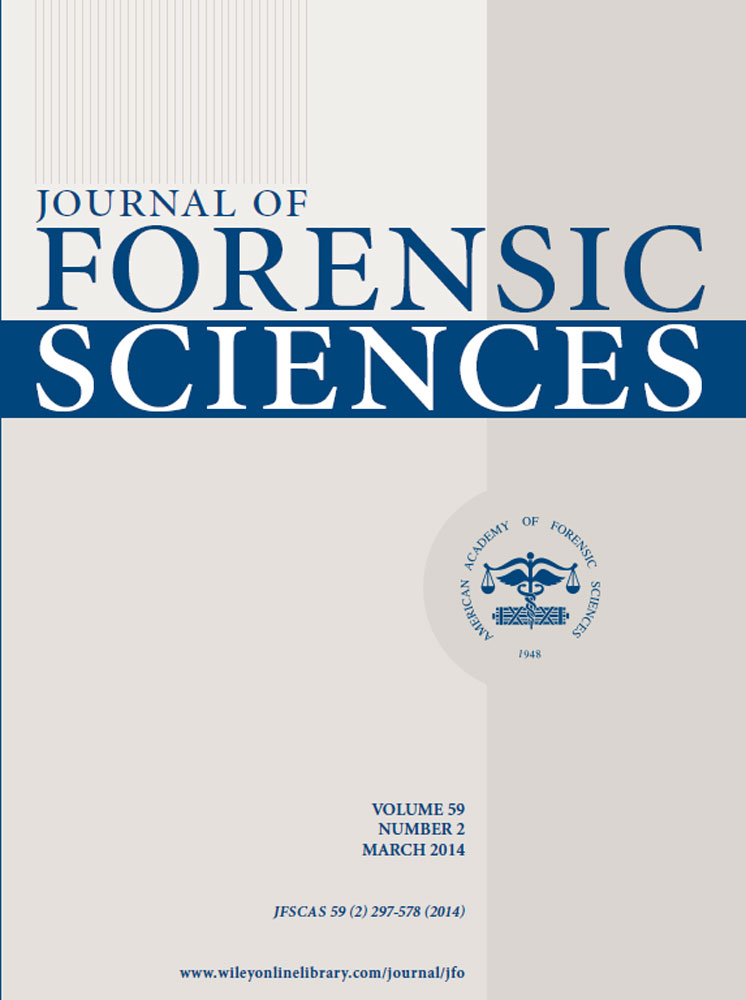A Radiographic Study on the Utility of Cranial Vault Outlines for Positive Identifications†
Abstract
A standard method for positive identification is the use of antemortem and postmortem radiographic comparisons. The purpose of this research is to test the visual accuracy of antemortem and postmortem radiographic comparisons of cranial vault outlines and to evaluate their uniqueness using geometric morphometric methods. A sample of 106 individuals with varying levels of education and forensic case experience participated in a visual accuracy test. Of the 106 individuals, only 42% correctly assigned all of the radiographs, with accuracy rates ranging from 70 to 93% for each radiographic comparison. Vault shape was further examined using elliptic Fourier analysis, and paired t-tests were computed on the first 10 principal components accounting for 100% of the variance, which found no significant differences. The visual accuracy test and elliptic Fourier analysis shows that vault outlines may not be unique enough for positive identifications when used as a sole indicator.




